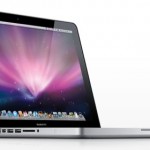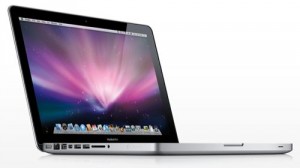
If you’ve dabbled in computing much, you’ve probably come across Moore’s law – basically; as Wikipedia so succinctly puts it, “Since the invention of the integrated circuit in 1958, the number of transistors that can be placed inexpensively on an integrated circuit has increased exponentially, doubling approximately every two years”
All good and dandy, but recently something funny has happened – people seem to simply not need faster computers anymore. This is relevant to photographers, because there’s a parallel between computing and photography: Just like you eventually don’t need more megapixels in a camera (one group has gone as far as saying that 6mpx is all you need, and – with a few notable exceptions, I think I am inclined to agree), you eventually have all the speed you need from a computer.
This one became clear to me when I started looking into replacing my now-3-year-old MacBook. It’s a black one, with a dual-core 2Ghz processor. It started its life as a 1GB/120GB configuration, but I since upgraded it to 4GB/250GB (an upgrade you can do today for about £70/$100). You know what’s odd? If you look at the current-spec 13-inch unibody MacBook Pro, it’s got essentially the same spec: 2.26 Ghz / 2GB / 160GB… I think Apple have realised what the rest of the world realised, too: Computers are finally Good Enough.
 Sure, there are always groups of people who will perennially have an insatiable hunger for more processor cores, more memory, and more storage space; serious gamers, video editors, and scientists spring to mind – but even for the power-users (I do count myself as one), we’re starting to hit a plateau where it’s perfectly okay to own a 3-year-old computer. Which just messes with my brain; when I first started getting into computers, the second you bought one, it was out of date. I remember the first time I plonked down a serious amount of money on a new computer (before then, I’d always had hand-me-downs or I’d bought second-hand computers) – it was a Dell, which had a Pentium III, 600 Mhz. I’m telling you, it was the cream-of-the-crop, one of the fastest computers you could buy. It had a whopping 1GB of memory, too, which was insanely expensive, and made it incredibly fast indeed. Six months later, I found myself upgrading several of its components, and six months after that, again. And again. And again.
Sure, there are always groups of people who will perennially have an insatiable hunger for more processor cores, more memory, and more storage space; serious gamers, video editors, and scientists spring to mind – but even for the power-users (I do count myself as one), we’re starting to hit a plateau where it’s perfectly okay to own a 3-year-old computer. Which just messes with my brain; when I first started getting into computers, the second you bought one, it was out of date. I remember the first time I plonked down a serious amount of money on a new computer (before then, I’d always had hand-me-downs or I’d bought second-hand computers) – it was a Dell, which had a Pentium III, 600 Mhz. I’m telling you, it was the cream-of-the-crop, one of the fastest computers you could buy. It had a whopping 1GB of memory, too, which was insanely expensive, and made it incredibly fast indeed. Six months later, I found myself upgrading several of its components, and six months after that, again. And again. And again.
So I’m no longer a serious gamer (or indeed, a gamer at all – I moved to the place where I live now, about four months ago, and my poor Xbox has never been out of its box), but I am a pretty serious photographer. I run the CS3 suite by Adobe, and I take all my photographs in RAW format. It’s not that long ago that editing RAW photos was a huge chore which would take bloody ages, but with 4GB of memory (which is a trivial upgrade, both in DIY-skills and in monetary investment) is of huge help.
The thing that dawned on me the other day is that no, you no longer need the cutting edge of computer equipment to play with the big boys: while I love the design of the new MacBook Pros, i’d be spending the best part of a grand without actually upgrading my kit all that much: I’d still have to buy extra RAM and harddrive space to make the computer faster than the one I’ve got now.
So what do you recommend
I guess what I’m trying to say is that we’re in a very good place for photographers when it comes to computers: You don’t need a new, or even a fast computer to be able to edit your photos at a professional level – and the longer this plateau stays around, the cheaper computers are going to get. Which, again, is good news.
Of course, the real reason I wrote this rambly-rant of a blog post is so I have something to point people to when they ask what kind of computer they need to buy to be able to edit their photos properly; my answer is simple: Even the cheapest Dell computer will do the trick: Right now, you can pick up a Dell Inspiron with a 2.6 GHz dual-core processor, 3GB of memory, a 20-inch widescreen monitor, 320 Gb harddrive, optical mouse and built-in card-readers for under 375 quid. That, ladies and gentlemen, is a lot of computer for not-a-lot of money.
Specifically, however, I’d recommend you make sure you have enough memory (2GB should be enough, 4GB is plenty), and a screen which you like to work on – bigger is better, I’d recommend 19-inch or bigger. An optical mouse makes precision-work a little easier (I know a lot of photographers who buy expensive gaming mice for increased precision, but I think that’s probably a bit overkill), and beyond that, a copy of Photoshop (which will cost about the same as the computer outlined above, but is a must-have for anyone who is serious about photography), and you’re done.
So Haje, what is your set-up, then?
Thought you’d never ask. I use a MacBook 2Ghz / 4GB / 250GB hooked up to a Samsung 23-inch monitor and a Logitech LX710 wireless keyboard and mouse. Not technically part of the computer set-up is a set of nice studio monitor speakers and a Pioneer amp to play tunes – but I can’t work without music (right this very second, for example, I’m listening to a spot of Gatas Parlament, a Norwegian hip-hop group – if you want to take your aural stalking to a higher level, look me up on Last.fm), so the music bit of all of this is completely essential.
But ultimately, personally, I’d be perfectly happy with any laptop with an Apple logo on it, manufactured in the past 3-4 years or so.
Do you enjoy a smattering of random photography links? Well, squire, I welcome thee to join me on Twitter - Follow @Photocritic
© Kamps Consulting Ltd. This article is licenced for use on Pixiq only. Please do not reproduce wholly or in part without a license. More info.





